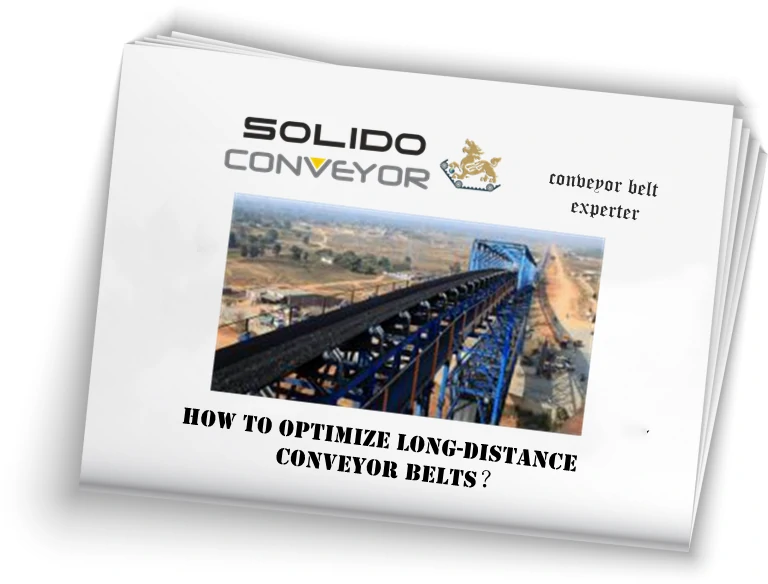How to optimize long-distance conveyor belts?
Conveyor belts maintenance optimize:
Long-distance conveyor belts play a vital role in industrial production and logistics industries, facilitating the efficient movement of large quantities of materials. To ensure optimal performance and productivity, it is important to implement various strategies for optimizing these conveyor belts maintenance. In this article, we will explore several key approaches to enhance the efficiency and reliability of long-distance conveyor belts.

1. Rational Selection of Conveyor Belt:
When it comes to long-distance transportation, segmented transportation can be employed to enhance support and guidance. By incorporating additional devices, such as idlers and rollers, the curved surface and slippage issues associated with the conveyor belt can be minimized. This ensures smoother material flow and reduces the risk of belt damage or misalignment during operation.
2. Regular Maintenance and Repair:
To maximize the lifespan and operational efficiency of conveyor belts, regular maintenance and repair are essential. Implementing a proactive maintenance schedule helps identify and address potential issues before they escalate into major problems. This includes inspecting and cleaning the belt, checking for wear and tear, and promptly replacing any damaged components. Lubrication of moving parts and realignment of the belt are also crucial maintenance tasks.
3. Efficient Material Loading and Unloading:
Properly arranging the loading and unloading processes is crucial for optimizing conveyor belt performance. Uneven material distribution or excessive loading can cause unnecessary strain on the belt and lead to premature wear. It is important to ensure a balanced and evenly distributed material flow onto the conveyor belt, avoiding overloading or spillage. Similarly, efficient unloading mechanisms should be in place to prevent material buildup and potential blockages.
4. Automation Technology Integration:
Leveraging automation technology is an effective approach to enhance the efficiency of material transportation on conveyor belts. Installing automated control systems and sensors along the conveyor line enables precise monitoring and control of the entire process. These systems can detect potential issues, such as belt slippage or misalignment, and trigger immediate corrective actions. Automation also facilitates the integration of sorting and routing systems, optimizing material flow and reducing manual intervention.
5. Energy Consumption Optimization:
Efficient energy consumption is another critical aspect of optimizing long-distance conveyor systems. Energy-saving equipment, such as high-efficiency motors and variable frequency drives (VFDs), can be employed to minimize power wastage. Implementing intelligent power management systems can help regulate energy usage based on demand, reducing overall consumption. Additionally, exploring alternative energy sources, such as solar or regenerative systems, can contribute to a greener and more sustainable operation.
6. Enhanced Management and Monitoring:
Optimizing the management and monitoring of long-distance conveyors is vital for seamless operation. Implementing a comprehensive monitoring system allows real-time tracking of key performance indicators (KPIs) such as belt speed, tension, and temperature. This enables proactive identification of potential issues and facilitates timely maintenance and repair activities. Integrating remote monitoring capabilities ensures that conveyor systems can be monitored and controlled from a centralized location, improving overall efficiency and reducing downtime.
By implementing these optimization strategies, the performance, reliability, and lifespan of long-distance conveyor belts can be significantly improved. Rational selection of conveyor belts, regular maintenance, efficient material handling, automation technology integration, energy consumption optimization, and enhanced management and monitoring all contribute to a more efficient and productive material transportation system. With a focus on continuous improvement and proactive maintenance, long-distance conveyor belts can operate at their full potential, supporting the smooth flow of materials in industrial and logistics applications.
If you’re looking for a new conveyor belt or belt maintenance services, we are offering customized conveyor belt consultation and manufacture to installation and repair based on various applications.
Have any questions? Contact your SOLIDOBELT today to learn more.